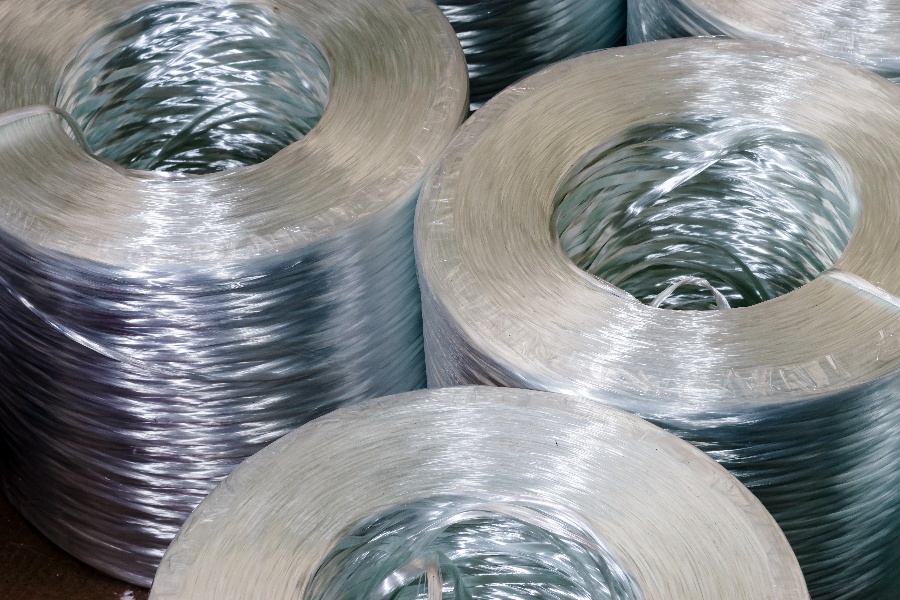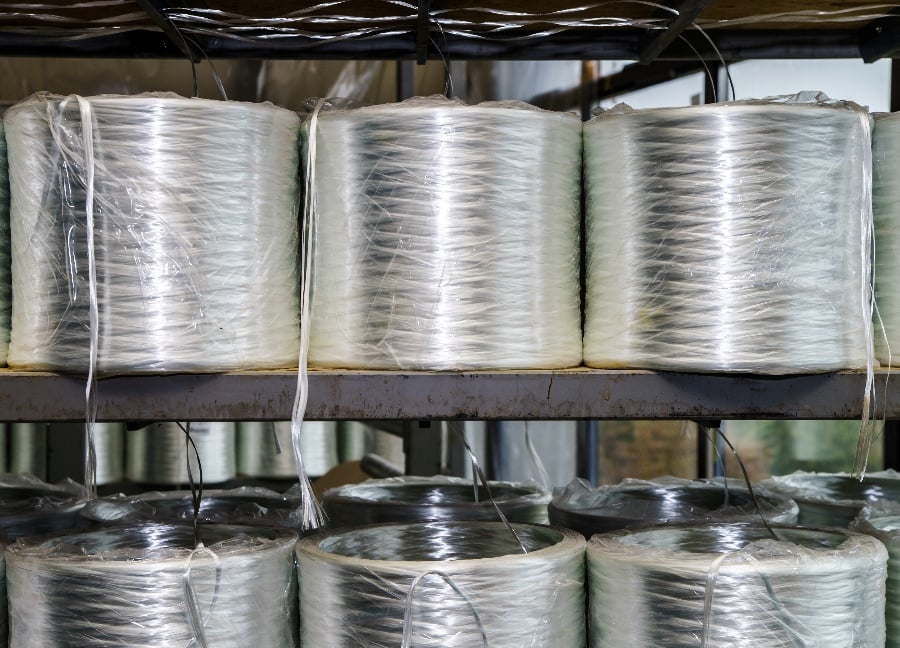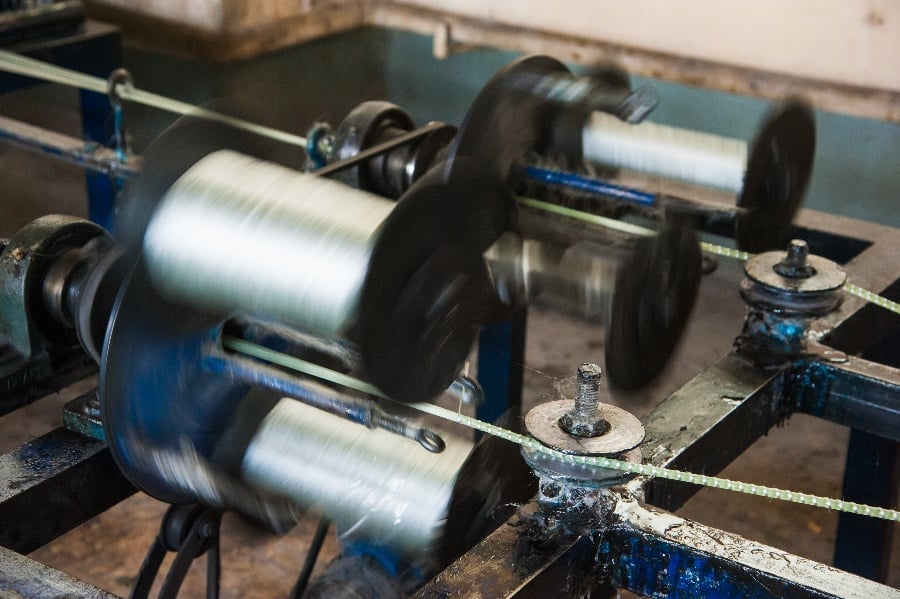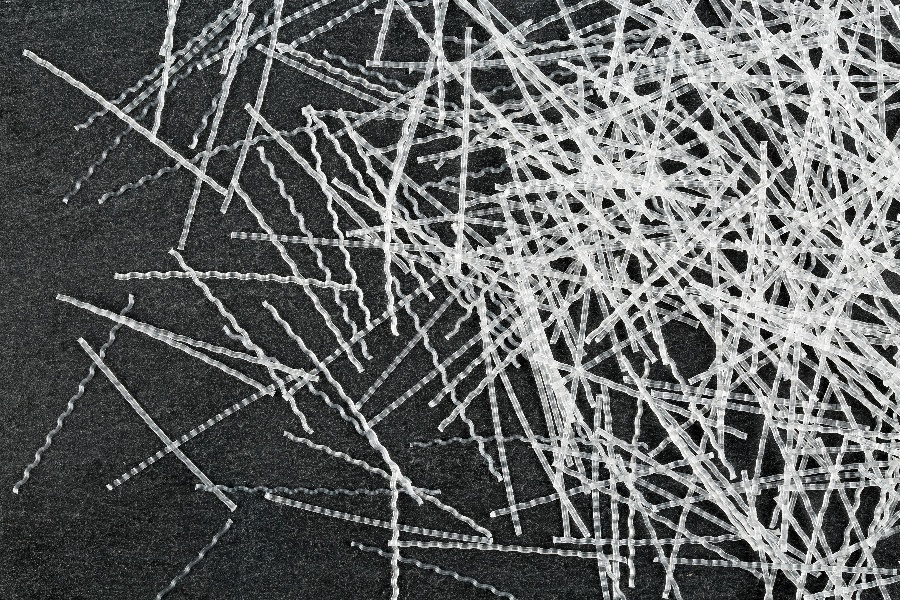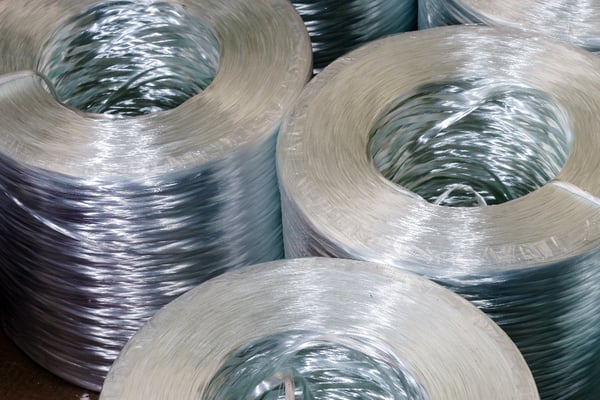
What exactly is Pultrusion? Pultrusion is a manufacturing process that changes reinforced fibers and liquid resin into a fiber-reinforced plastic (FRP).
Using a pulling method, the fibers are pulled through a resin bath, saturated then shaped, pulled through a heated steel die, and shaped again.
This pulling method allows for high-fiber load and controlled resin content. A range of reinforcing fibers and resin matrix can be used, such as glass, carbon, polyester, epoxy and vinyl ester, as well as thermoplastic resins.
This post examines the reasons for the increasing popularity of pultruded products across a variety of sectors.
Depending on the features that an application needs, many different types of resin and additives can be added to make sure the final product has the properties needed.
Research by the European Pultrusion Technology Association finds that composites such as glass fiber reinforced plastic (GFRP) rebar can maintain their micro-structural integrity and mechanical properties for 15 years of service and sometimes longer.
How Are Pultruded Products Made?
The characteristics of pultruded products come from the process in which they are manufactured. The pultrusion process converts reinforced fibers and liquid resin into a fiber-reinforced plastic (FRP) via a pulling method.
There are two main types of pulling systems used to create FRP profiles:
- Reciprocating (hand-over-hand); and
- Continuous (cat-track).
Pulled through a resin bath and saturated, the fibers are then shaped, pulled through a heated steel die, and shaped again. The fiber reinforcements must be positioned accurately within the finished composite so as to ensure strength and quality.
As the reinforcements exit the resin impregnator, they’re passed through “pre former” tools, designed to squeeze out surplus resin and organize the fiber reinforcements into the correct shape.
During this stage, additions such as continuous strand materials and protective surface veils are often included to improve the structure, resistance to corrosion and finish of the final product.
When the item hardens, urethane pull blocks are used to prevent cracks or deformities in the finished product and it is cut to the desired length .
This pulling method allows for high-fiber load and controlled resin content. Depending on the specific application, different resins and reinforcements ─ glass, carbon, polyester, epoxy and vinyl ester, as well as thermoplastic plastic resins ─ can be included to make sure the final product has the properties needed.
Composites can be also be customized by adding colors and can be made to have special appearance like wood grain, marble and granite. The final product can be painted, cut, dripped and bolted.
Highly Versatile, Low Maintenance
Pultrusion is now the preferred form of manufacture of composite parts for thousands of products in key application markets such as aerospace, infrastructure, engineering, telecommunication, oil & gas, automotive and sporting goods.
Over the next decade, the demand for pultruded products is projected to be one of most promising segments of the composites industry.
Increasingly popular in industry verticals, pultruded products offer a wide variety of advantages when compared to traditional products like steel, aluminum and wood.
For example, FRPs are used by architects, builders and homeowners for a variety of products such as window reinforcements, thermal breaks, oil and gas tubes, and sports equipment.
In comparison to the corrosion levels of metals used for bridges such as steel, iron and wood, pultruded products last longer as they are resistant to weather-induced decay.
Additionally, they can be used in sucker rods in the oil and gas industry as they are lightweight with lower installation and energy costs. They can also be used in spar cap structures for wind turbine blades, because of its lightweight and weather-resistance nature.
Combined with low maintenance, high tolerance, durability and strength, pultruded products can help businesses minimize the cost of construction.
Advantages of Pultruded Products
Corrosion resistant - Glass fiber composites can be used for applications that are exposed to the elements, especially in coastal areas with airborne and waterborne salt and moisture. They require minimal maintenance and will be resistant to the elements of weather. They have reduced impact from exposure to moisture and other chemical elements.
Durable - Composites are durable and have a long life span, which means they can last longer than wood.
Lightweight - Items that are made via pultrusion are 70% lighter than steel and approximately 40% lighter than aluminum. They are resistant to corrosion, and can also be non-conductive. This makes such products easier to transport and install, ultimately helping to lower costs.
High-strength - On a kilogram for kilogram basis, glass fiber composites are stronger than metals. Pultruded products are the strongest on the axis (lengthwise) direction. To optimize and to give extra strength to highly stressed areas of the final product, it is possible to vary the orientation and format.
Fire-Safety - During the manufacturing phase, fire-resistance additives can be introduced to pultruded composites, making them safer and compliant with fire safety regulations.
Thermal insulation - Composites have a lower thermal conductivity when compared to metals. Therefore, they are a great product to use for structures that need to minimize energy loss.
Electrical insulation - Pultruded materials can also be non-conductive and are excellent in current carrying applications, such as utility and telecommunication poles.
Green - Composites have some recyclable possibilities at the end of their life, which make them a sustainable option for companies looking to go green. They last longer and are good for insulation making them a great choice for energy-efficient buildings.
Growing Demand
Development opportunities for pultruded products are driven by the increasing demand for durable and lightweight products that are resistant to corrosion for various end user industries. For example, automotive, infrastructure and sporting goods industries.
By 2020, in the North American market, pultrusion is expected to achieve revenues of $1.06 billion, with a CAGR of 5%. The major growth sectors are infrastructure and construction, with products including pultruded glass fiber increasing in importance to 5G infrastructure.
Customized Profiles
Pultruded profiles such fiberglass rods, tubes, channels and shapes can help project managers realize a wide range of applications. If you have a project or product in mind and would like to learn more about the potential of FRPs, you can contact us here. We’d be delighted to talk you through the options.

